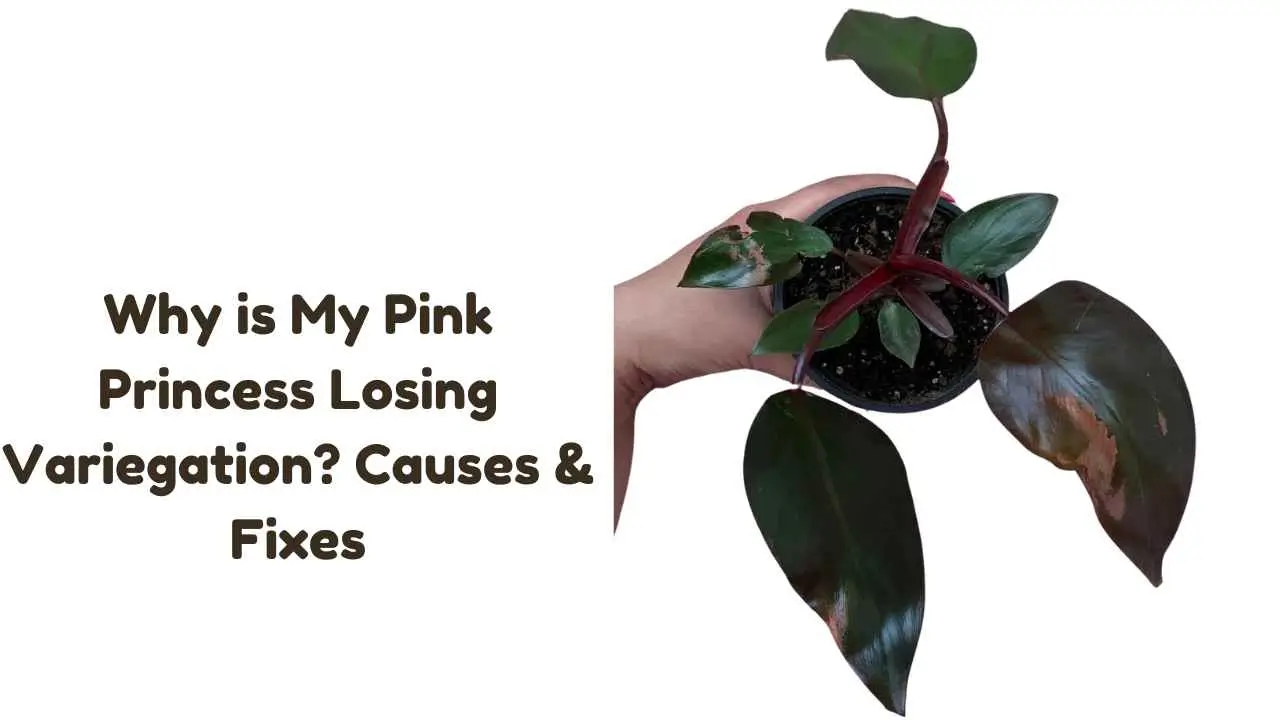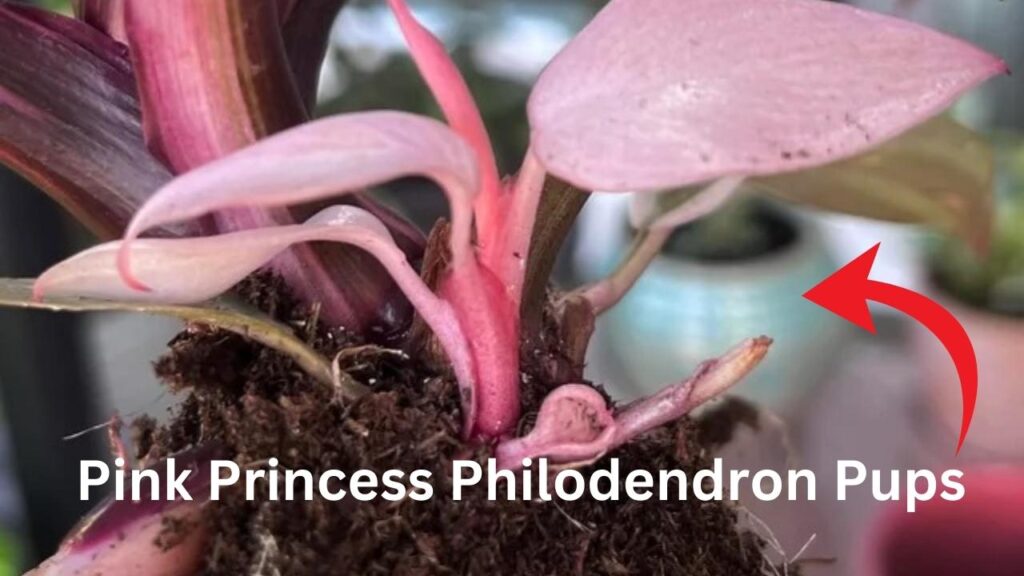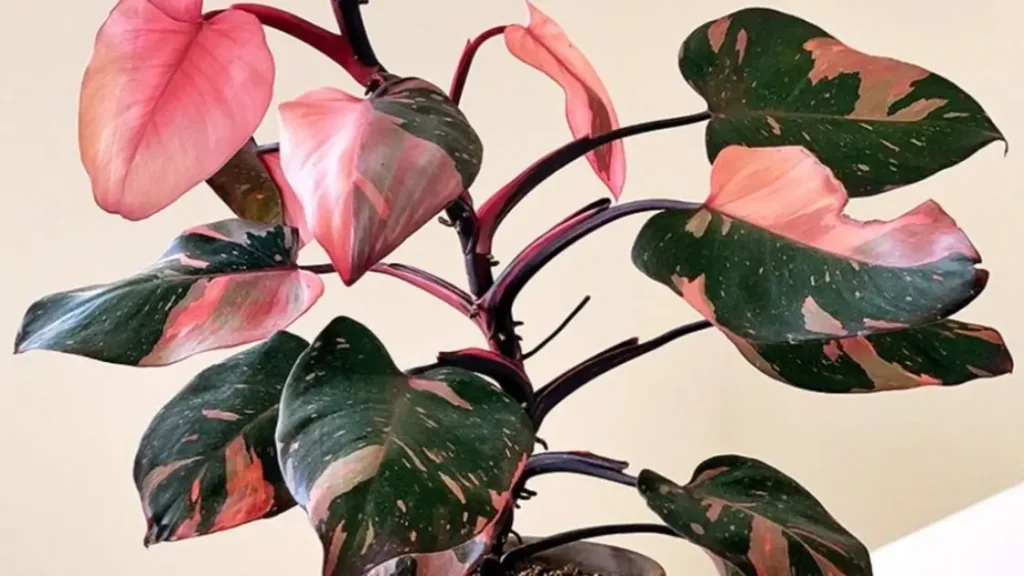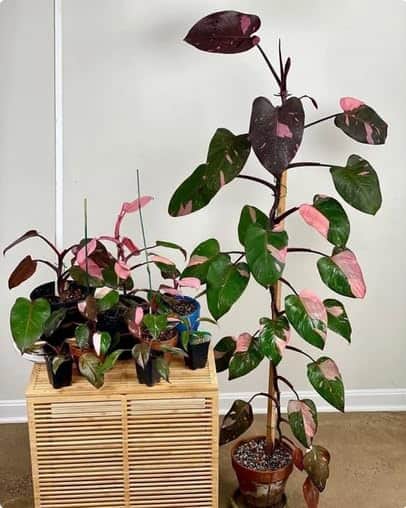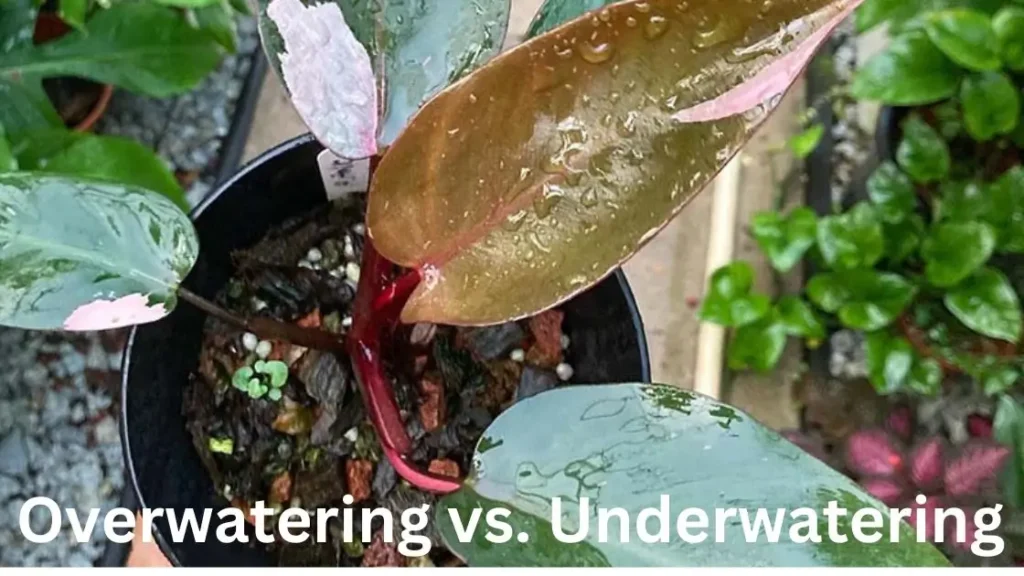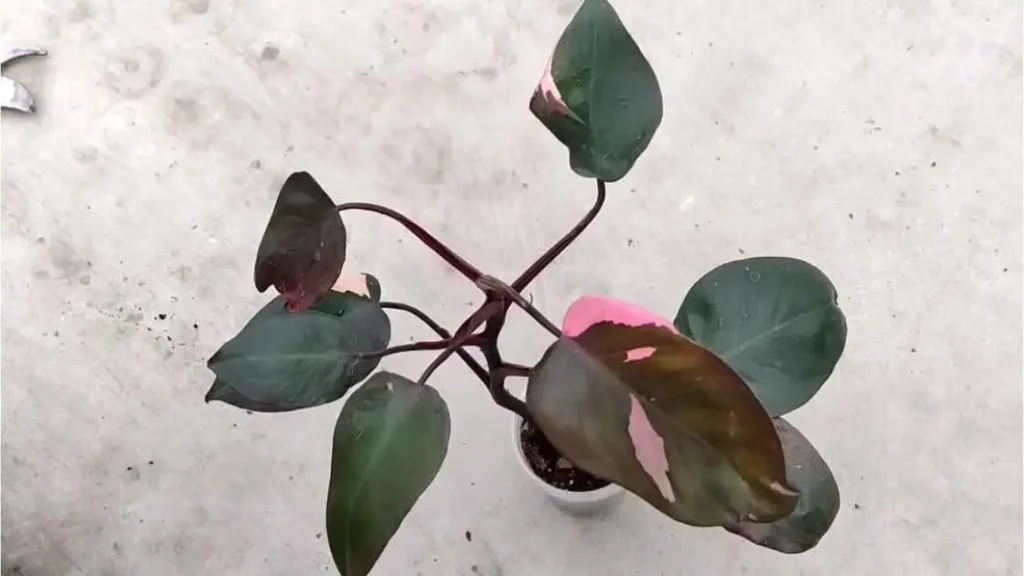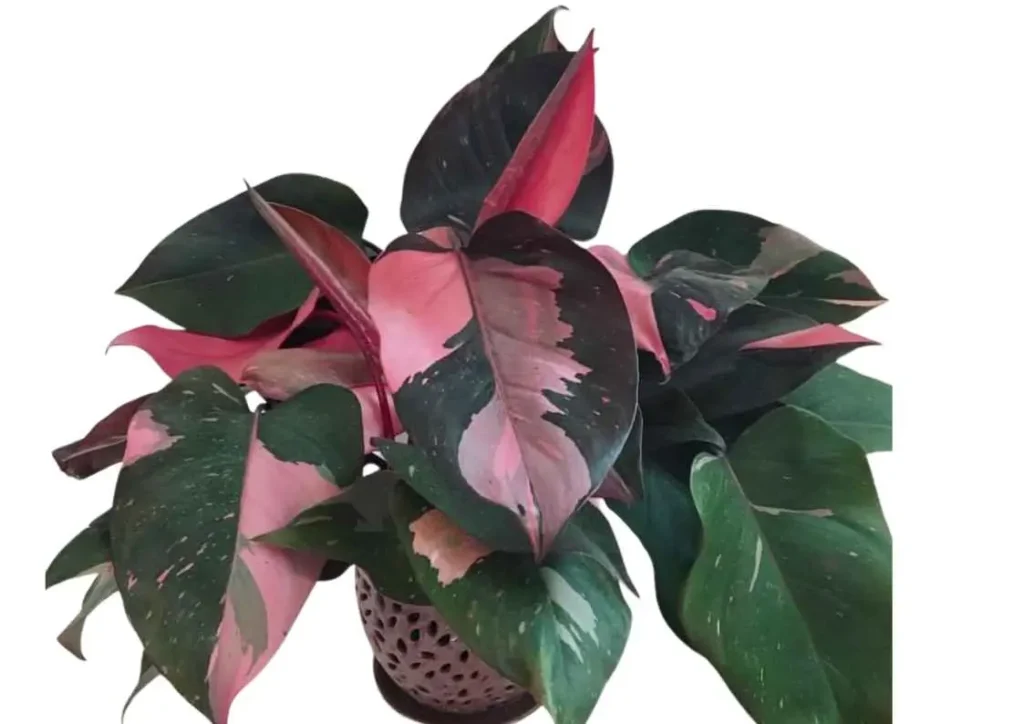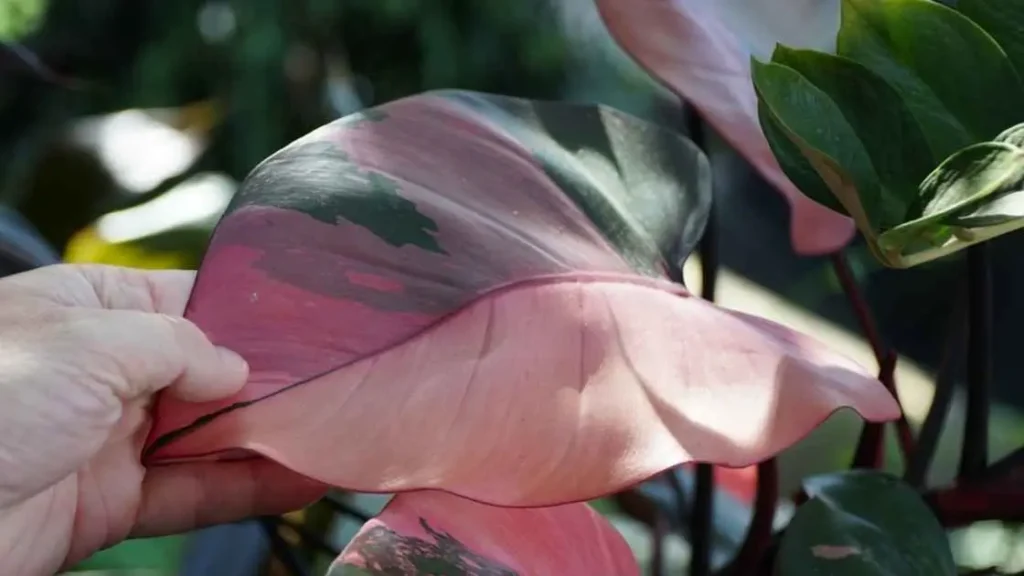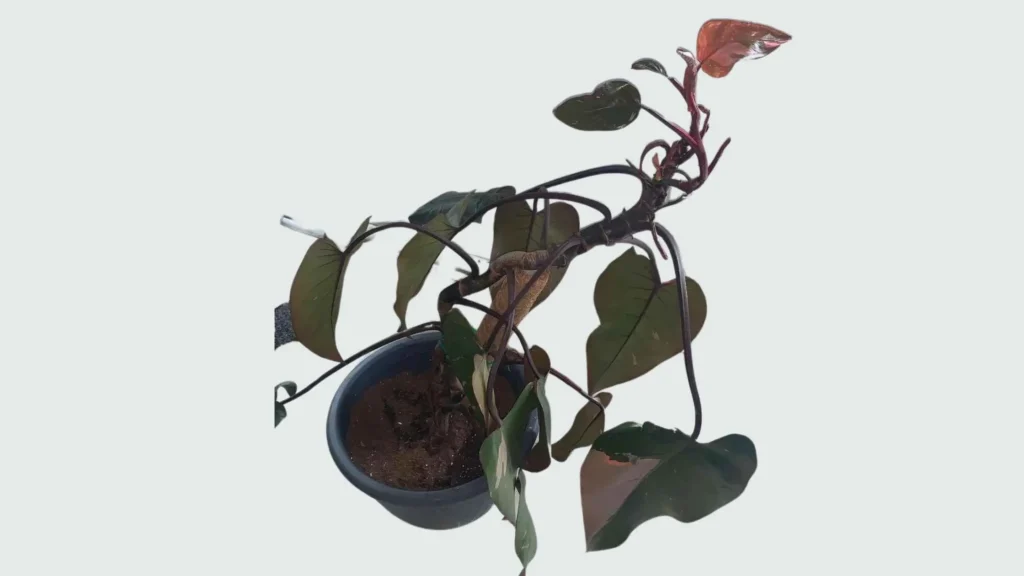Table of Contents
ToggleWhen I first got my Pink Princess Philodendron, I was ecstatic. Those pink and green leaves were just stunning! But after a few months, I noticed something alarming – the beautiful pink color was fading, and more green leaves were appearing. I was worried and knew I had to figure out why my Pink Princess was losing its variegation and how to fix it.
In this article, I’ll share my journey of discovering the reasons behind the loss of variegation in Pink Princess Philodendrons and the steps I took to bring back their vibrant beauty. If you’re dealing with the same issue, stick around to learn how to keep your plant looking its best.
Understanding Variegation in Pink Princess Philodendrons
Variegation in Pink Princess Philodendrons happens due to a genetic mutation that makes parts of the leaves lack chlorophyll, giving them their pink color. This variegation isn’t just for looks; it affects the plant’s ability to make food from sunlight. Variegated leaves have less chlorophyll, so they’re not as good at photosynthesis. This makes them more sensitive to changes in their environment.
One key factor for keeping variegation is enough light. Pink Princess Philodendrons love bright, indirect light. If they don’t get enough light, they’ll produce more green leaves to make up for the lack of energy, causing a loss of variegation. Also, genetic stability plays a role – some plants naturally revert to their non-variegated form over time.
Understanding these factors is crucial for addressing why your Pink Princess Philodendron is losing variegation and taking the necessary steps to prevent it.
Common Causes of Loss of Variegation
When I noticed my Pink Princess Philodendron losing its pink hues, I started looking into the possible reasons. Here are the most common causes I found:
Insufficient Light
One of the main reasons for losing variegation is not enough light. Pink Princess Philodendrons need bright, indirect light to keep their vibrant colors. If the plant is in a low-light area, it will produce more green leaves to get more energy from the light, leading to a loss of variegation. I moved my plant to a brighter spot, making sure it got plenty of indirect sunlight, and this made a big difference.
Nutrient Imbalance
Another factor that can affect variegation is a nutrient imbalance. Variegated plants often need specific nutrients to keep their color. A deficiency in essential nutrients like nitrogen, phosphorus, and potassium can cause the plant to lose its pink variegation. Regular feeding with a balanced fertilizer can help maintain the plant’s health and variegation. I started using a high-quality houseplant fertilizer, and it improved the overall health of my plant.
Overwatering
Overwatering can lead to root rot, which stresses the plant and can cause it to lose variegation. Pink Princess Philodendrons prefer their soil to dry out a bit between waterings. I learned to let the top inch of soil dry out before watering again to prevent overwatering and root rot.
Natural Reversion
Sometimes, despite our best efforts, a Pink Princess Philodendron may naturally revert to its non-variegated form. This reversion can happen due to genetic instability. While this can be disappointing, it’s a natural process for some plants. Keeping the plant in optimal conditions can slow down this process, but it might not be entirely preventable.
Understanding these common causes helped me adjust my care routine and improve the variegation of my Pink Princess Philodendron.
Preventive Measures to Maintain Variegation
To keep your Pink Princess Philodendron from losing its variegation, it’s important to create the right environment and care routine. Here’s what worked for me:
Optimal Lighting
Make sure your plant is getting bright, indirect light. I placed mine near an east-facing window where it gets morning sun and is shaded in the afternoon. During the winter months, when natural light is limited, I used a grow light to maintain the light levels my plant needs.
Proper Watering Practices
Overwatering can be harmful, so it’s crucial to let the soil dry out a bit between waterings. I use the finger test – if the top inch of soil feels dry, it’s time to water. This helps prevent root rot and keeps the plant healthy. Using a well-draining soil mix with added perlite or orchid bark also ensures good drainage and aeration.
Nutrient Management
Feeding your Pink Princess Philodendron with a balanced fertilizer is essential. I use a liquid houseplant fertilizer once a month during the growing season and reduce feeding in the winter. This ensures the plant gets the nutrients it needs without over-fertilizing, which can also cause problems.
Regular Pruning
Pruning helps maintain variegation by encouraging new growth. I regularly prune back any green or non-variegated leaves to encourage the plant to produce more pink leaves. This not only keeps the plant looking attractive but also helps maintain its health and vigor.
By following these preventive measures, I’ve been able to keep my Pink Princess Philodendron vibrant and healthy.
Steps to Restore Variegation
If your Pink Princess Philodendron has already lost some of its variegation, don’t worry – there are steps you can take to restore it:
Adjusting Light Conditions
First, ensure your plant is getting enough light. Move it to a brighter spot with plenty of indirect sunlight. Avoid direct sunlight, as this can scorch the leaves. If natural light is insufficient, consider using a grow light to supplement.
Pruning and Propagation
Pruning is an effective way to encourage variegation. Cut back any green or non-variegated leaves, and focus on promoting new growth. Additionally, you can propagate stem cuttings that show signs of variegation. This can sometimes result in new plants with better variegation patterns.
Why Should You Monitor and Adjust Your Care Routine?
Consistency is key. Regularly monitor your plant’s condition and make necessary adjustments to its care routine. Ensure it receives adequate light, proper watering, and balanced nutrients. Sometimes, slight tweaks in your care routine can make a significant difference in the plant’s appearance and health.
By taking these steps, I’ve managed to restore the beautiful pink variegation in my Pink Princess Philodendron and keep it thriving.
In conclusion, maintaining the stunning variegation in your Pink Princess Philodendron requires understanding its needs and providing the right care. From ensuring adequate light to proper watering and feeding, each step plays a crucial role in preserving the plant’s beauty. By following these tips and adjusting your care routine as needed, you can keep your Pink Princess vibrant and healthy. Remember, each plant is unique, so monitor its condition regularly and don’t hesitate to make changes to meet its specific needs. Happy planting!
FAQs
Why is my Pink Princess Philodendron losing its pink variegation?
The loss of variegation in your Pink Princess Philodendron is often due to insufficient light. Ensure your plant receives bright, indirect sunlight to maintain its vibrant colors.
How can I restore the variegation in my Pink Princess Philodendron?
To restore variegation, move your plant to a brighter spot with indirect light, prune non-variegated leaves, and maintain proper watering and nutrient balance.
What type of light is best for Pink Princess Philodendron to keep its variegation?
Pink Princess Philodendrons thrive in bright, indirect light. Avoid direct sunlight as it can scorch the leaves, but ensure the plant receives enough light to maintain its variegation.
Can overwatering affect the variegation of my Pink Princess Philodendron?
Yes, overwatering can lead to root rot and stress the plant, causing it to lose variegation. Let the soil dry out slightly between waterings to prevent this issue.
Is it normal for a Pink Princess Philodendron to revert to its non-variegated form?
Yes, natural reversion can happen due to genetic instability. While it can be slowed by optimal care, it may not be entirely preventable. Regular pruning can help manage this.
Related
Discover more from Pink Philodendron
Subscribe to get the latest posts sent to your email.

